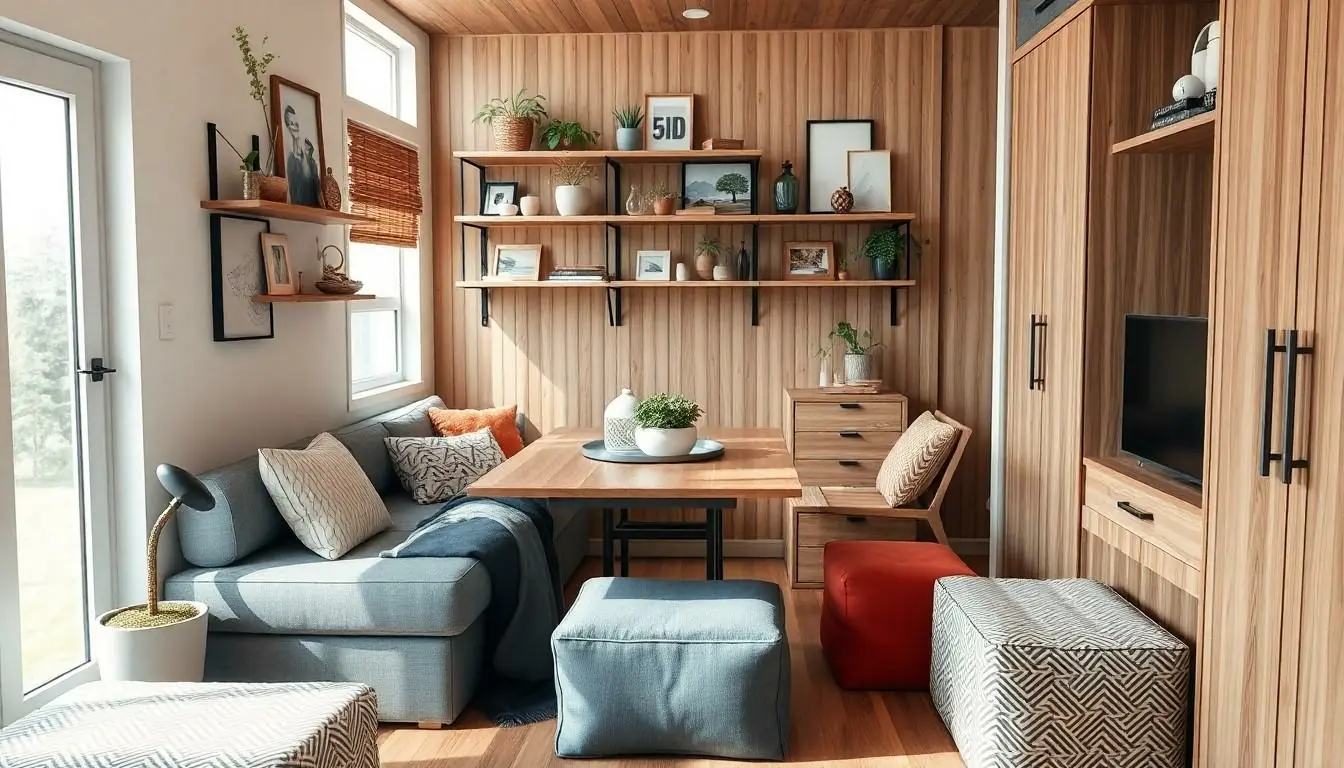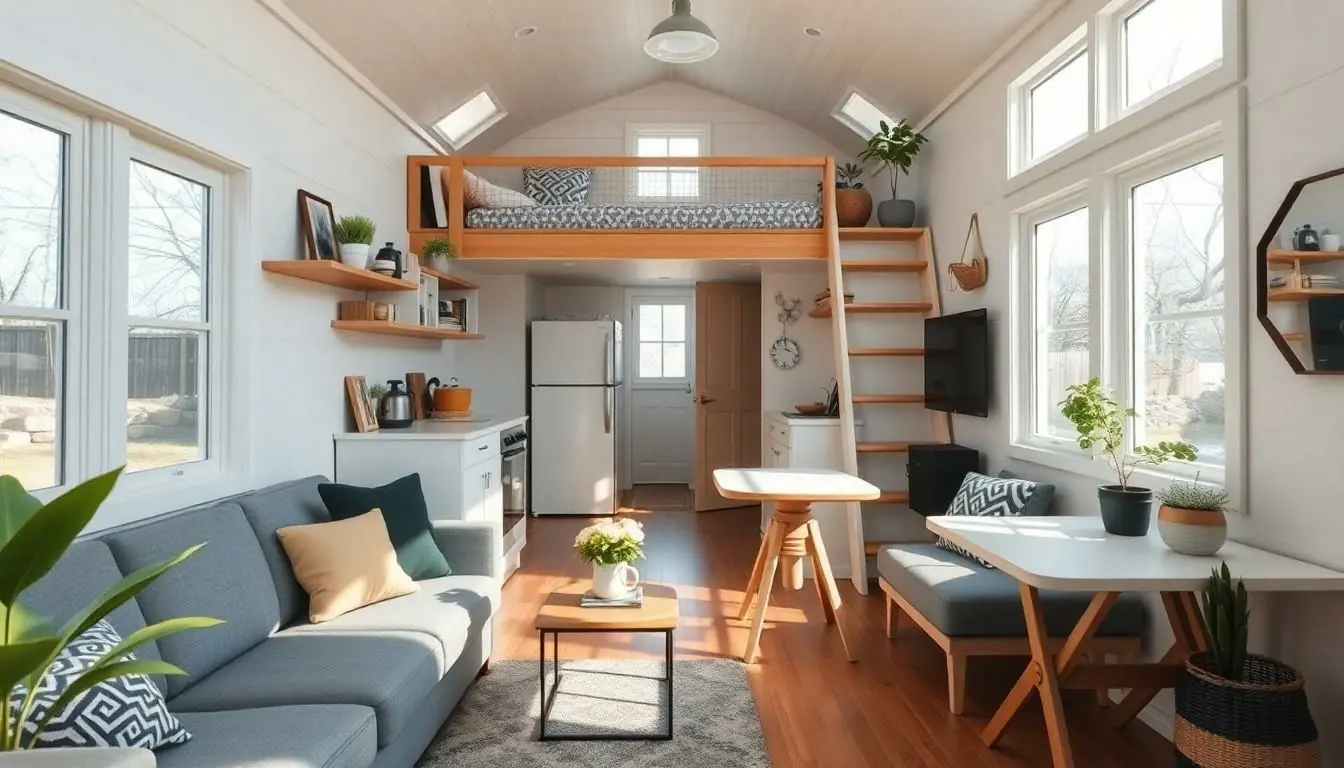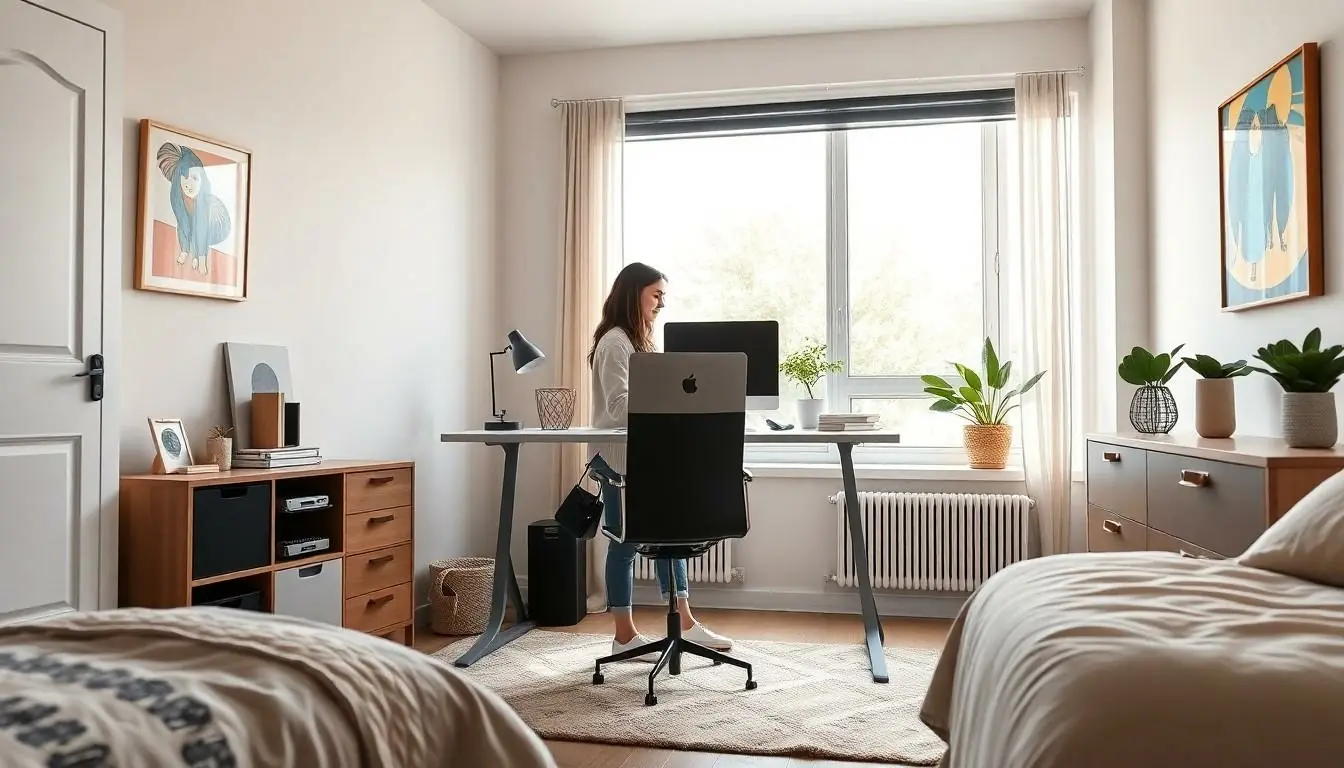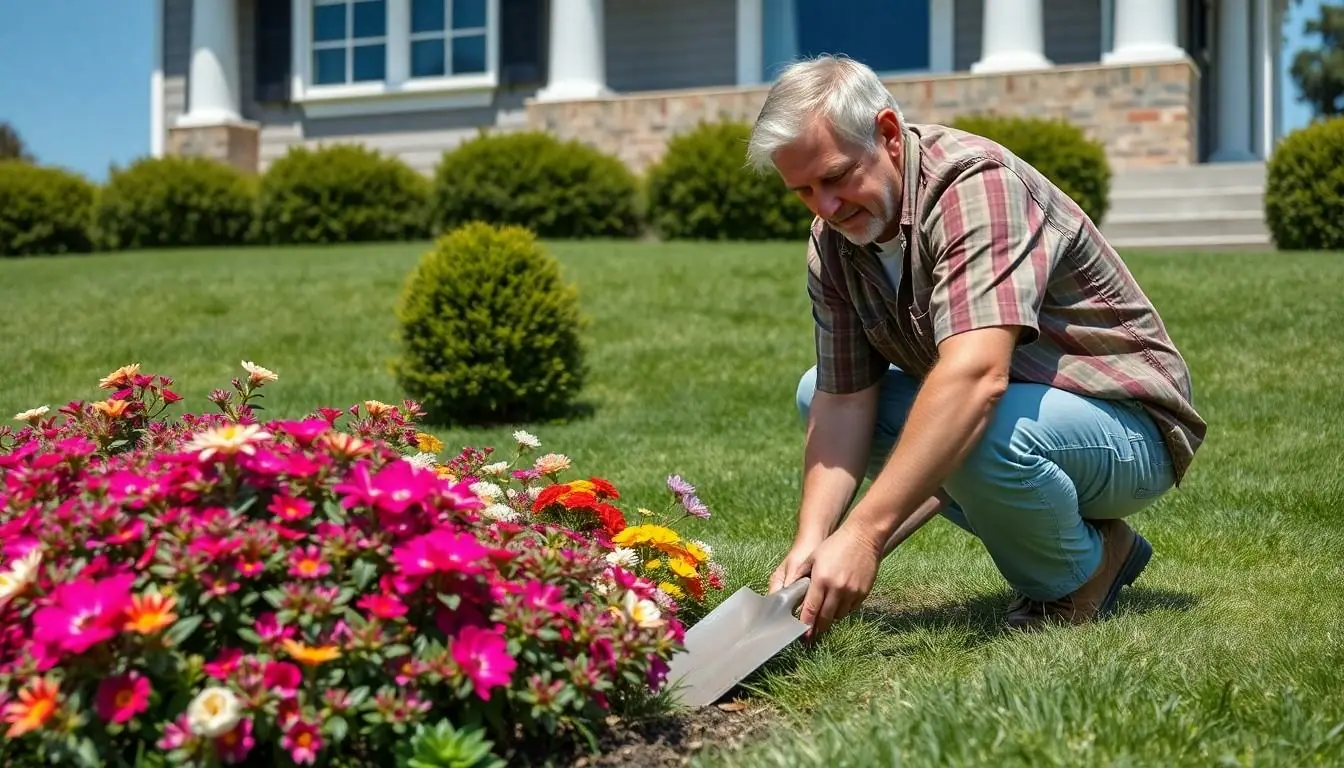In a world where bigger often means better, tiny homes are flipping the script. They’re not just cute little dwellings; they’re a clever way to maximize space and minimize stress. With the right layout, even the coziest of nooks can transform into a functional haven. Who knew that living small could lead to living large?
Table of Contents
ToggleOverview of Tiny Home Layout Ideas
Tiny homes offer diverse layout options that enhance functionality and comfort. Optimizing every inch is crucial in these compact spaces. Open floor plans simplify movement and create an illusion of spaciousness. Multi-functional furniture, such as sofa beds and expandable tables, maximizes usability.
Storing belongings efficiently remains a key aspect of tiny home design. Vertical storage solutions, including shelves and cabinets, utilize wall space effectively. Creative under-bed storage or built-in solutions like drawers can also help maintain a clutter-free environment.
Regarding room distribution, a combined living and kitchen area often serves as the heart of a tiny home. This design encourages social interaction while cooking or relaxing. Additionally, split zones can define different functions within the same space, allowing for privacy when needed.
Incorporating natural light boosts the ambiance and perceived size of tiny homes. Large windows, skylights, and glass doors often facilitate light entry, enhancing overall feel. Adding outdoor spaces, like porches or decks, expands living areas and connects nature to the home.
Tiny homes often feature innovative sleeping arrangements. Lofted beds or murphy beds enable efficient use of vertical space while providing flexibility. Many designs utilize cozy nooks for sleeping, creating inviting and intimate resting spaces.
Exploring various tiny home layout ideas reveals practical solutions for modern living. Each design presents unique benefits suited to individual preferences. Prioritizing functionality and creativity transforms small spaces into comfortable and appealing homes.
Maximizing Space Efficiency

Maximizing space efficiency is critical in tiny home design. Thoughtful layouts maximize usefulness without sacrificing comfort.
Multi-Functional Furniture
Multi-functional furniture serves diverse purposes. A sofa bed provides both seating and sleeping options. Foldable tables can expand dining areas while remaining compact. Nesting tables offer versatility by stowing away when not in use. With storage ottomans, homeowners gain extra seating and hidden compartments for belongings. Embracing these furniture styles fosters a flexible living environment that adapts to various needs.
Smart Storage Solutions
Smart storage solutions are essential for organizing tiny homes. Vertical shelving uses wall space efficiently and keeps items within reach. Under-bed drawers offer hidden storage for clothing and seasonal items. Utilizing corner cabinets maximizes often-overlooked areas, while over-the-door organizers free up floor space. In-built furniture pieces like benches with hidden storage allow for multifunctional use. These strategies help maintain an organized and clutter-free atmosphere, enhancing overall functionality.
Popular Tiny Home Layout Styles
Tiny homes feature various layout styles that maximize space and enhance livability. Each layout promotes functionality tailored to specific needs.
Open-Concept Designs
Open-concept designs create a seamless flow between living, dining, and kitchen areas. They’re ideal for small spaces, as these layouts eliminate unnecessary walls, making rooms appear larger. Natural light enters freely through expansive windows, contributing to an airy atmosphere. Furniture placement becomes flexible, allowing for easy movement during social gatherings. This layout encourages interaction among occupants, promoting a cozy living experience. Design elements like sliding doors can separate spaces while maintaining openness when desired.
Lofted Sleeping Areas
Lofted sleeping areas utilize vertical space efficiently, freeing up the main level for daily activities. By elevating the bedroom, these designs create a distinct sleeping zone, offering privacy without sacrificing floor space. Accessing lofted beds usually requires a sturdy ladder or staircase, adding a unique architectural feature. Choices for mattress types range from traditional to compact options, ensuring comfort. Such arrangements allow for creative use of the area beneath the loft, serving as storage or a workspace. Lofted sleeping areas showcase how innovation and design combine to optimize small living environments.
Personalizing Your Tiny Home Layout
Personalization enhances the charm and functionality of tiny homes. Tailoring design elements allows individuals to create spaces that reflect their unique lifestyles.
Incorporating Natural Light
Maximizing natural light in tiny homes significantly alters the atmosphere. Large windows, skylights, and glass doors invite sunlight, creating a brighter feeling indoors. Designing spaces with light colors or reflective surfaces further amplifies illumination. Layering window treatments provides flexibility to control brightness throughout the day. Choosing strategically located windows can offer views of nature, enhancing the overall experience of the space.
Creating Outdoor Living Spaces
Integrating outdoor living areas extends the usable space of tiny homes. Adding decks or patios increases outdoor enjoyment and provides additional room for relaxation or gatherings. Folding or stackable furniture allows for adaptable seating arrangements. Landscaping with native plants creates a welcoming environment while minimizing maintenance needs. Incorporating outdoor cooking facilities, such as grills or portable kitchens, encourages outdoor entertaining.
Challenges in Tiny Home Layout Planning
Tiny home layout planning presents certain challenges that require careful consideration. Navigating strict zoning laws can be one of the primary obstacles. Understanding local regulations about minimum square footage, permitted structures, and land use is essential. Zoning laws vary significantly between regions, and noncompliance can lead to fines or even demolition. Researching these laws provides clarity and helps avoid costly mistakes.
Another challenge involves dealing with limited space. Maximizing every inch of a tiny home calls for strategic thinking. Innovative storage solutions, such as multifunctional furniture, can help create room while maintaining organization. Prioritizing essential items and minimizing possessions contributes to efficient layout planning. Utilizing vertical space effectively is key in small areas, as it enhances usability and allows for a more open, airy feel in cramped quarters. Thoughtful design can transform limitations into opportunities for creative solutions.
Tiny homes offer a unique blend of charm and efficiency that resonates with many seeking a simpler lifestyle. By embracing innovative layouts and multi-functional designs, individuals can transform limited space into inviting and practical living areas.
Personalization plays a crucial role in making these homes truly reflect one’s lifestyle while optimizing comfort and functionality. With the right approach to design and storage solutions, tiny homes can provide not just a place to live but a fulfilling way of life.
As the trend continues to grow, the possibilities for creative layouts will only expand, inspiring more people to consider the benefits of downsizing and reimagining their living spaces.







